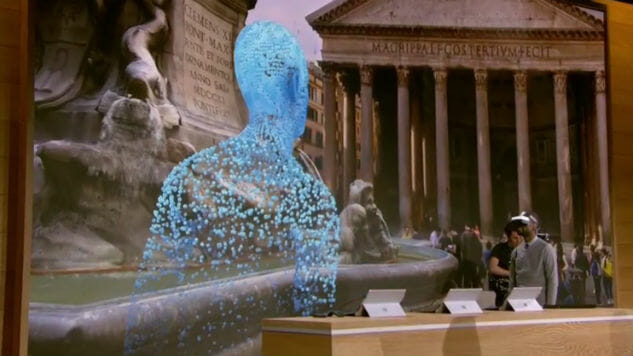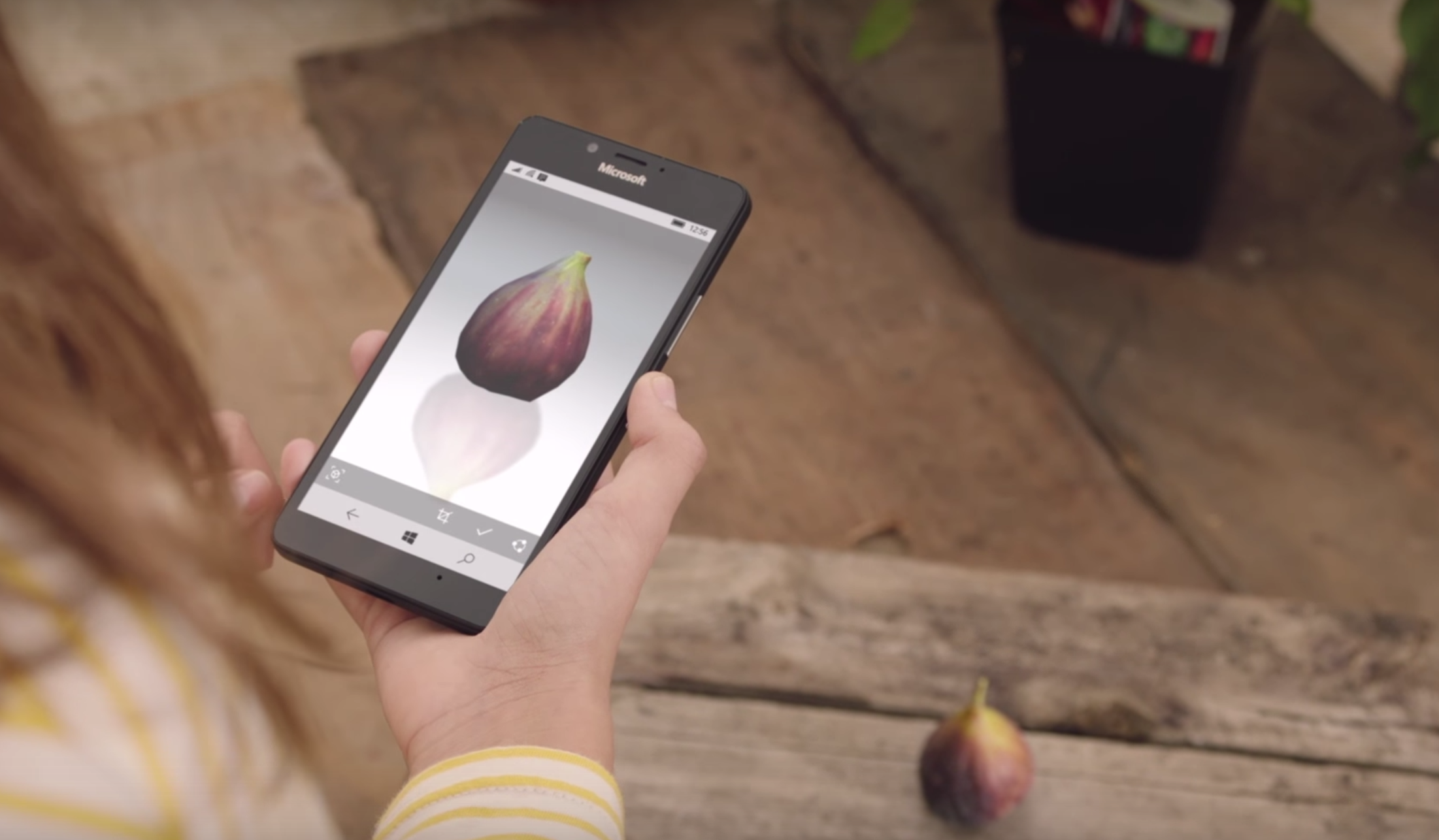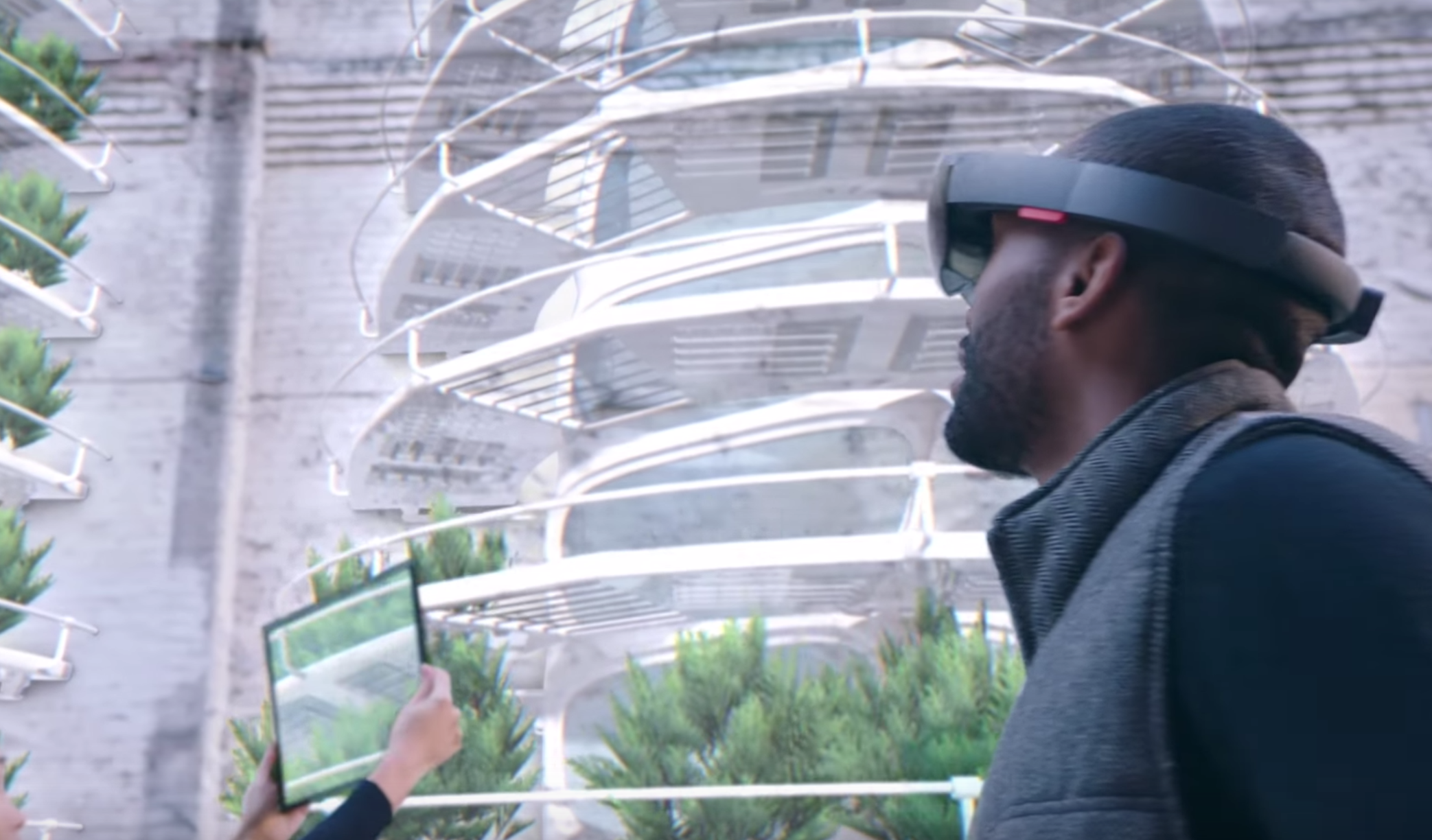
Microsoft’s live briefing today held a whole host of interesting new gadgets and adaptations to their Windows 10 landscape. From incredible looking giant Surface tablets and really precise pens to that cool dial that does… well… stuff, there was a lot to digest. But as a person who really likes the idea of escaping reality, their demos on where the HoloLens Augmented Reality is going and the introduction of yet another VR platform held the most interest.
With the HoloLens, Microsoft demonstrated some truly powerful applications for creators (which was the whole theme of the presentation). The idea that you can 3D scan a real-world object, virtualize it, and then use it within virtual environments is, frankly, astounding. The applications for this are nearly limitless, but if you’re a creative type who wants to manipulate virtual environments for real world applications—everything from designing a room to a video gaming world—this could mark a sea change in how we input visual information into computers.

The other impressive aspect was the HoloLens’ ability to create a personal interactive virtual environment that (presumably) feels like a living space. The demonstration showed us virtual shelves that held apps and a TV that you could resize and relocate just with natural gestures. It’s the closest thing yet to the interface we saw in Minority Report.
This might seem like a gimmick (and maybe it is), but it’s likely one that within 10 years will be an active part of a lot of people’s lives. From a personal perspective, though, AR has several advantages to full-on VR. VR headsets make great personal theaters, but you’re still locking the world away to experience mediums that frequently work best with actual human companionship. Devices like the HoloLens let you experience the middle ground. You’re still there in the real world, with people, but get the effect of the virtual overlaid on the real world.
Just the same, the HoloLens won’t be hitting too many living rooms any time soon. It’s still only available as an early development unit for a whopping $3000.
On the flipside, Microsoft has decided to make the newly churning waters of VR even more crowded with their own Windows 10-specific VR format. Honestly, they gave so little information about this that it’s too easy to speculate about what the point is. We know multiple manufacturers (HP, Dell, Lenova, Asus, and Acer were named) will be making headsets based on the standard and they’ll cost about $300.

The focus is on ease of use with only one cable to connect, which is a significant step up from other VR formats. The demo showed a quaint walking tour of Rome, but there’s a distinct Google Daydream of immersion implied here, where the focus is on very casual usage. Given that there was no mention of gaming, it’s a safe bet these headsets won’t be competing with the Oculus Rift and HTC Vive. The hardware power needed to run high resolution VR gaming experiences seems well beyond any of the new hardware Microsoft announced today, so these are—so far—clearly aimed at lower-end, non-gaming-focused hardware.
That said, several hundred dollars for a casual curiosity seems more than a little steep. It’s not completely out of the question that Microsoft is gearing up their own VR platform to connect to the upcoming more powerful Xbox One Scorpio. This is definitely something I, as an avid gamer, would love to see.
Either way, it’s early for both platforms, although the VR headsets will likely be out soon. The ‘Creator’s Update’ to Windows 10 comes out early 2017, which will allow for all this extra gadgetry and compatibility. So, for Windows users who love collecting new toys, things are about to get very interesting.